Knee arthroscopy is performed by making small incisions on the knee. During the procedure, the surgeon inserts a small camera instrument into the knee joint, which is normally referred to as an arthroscope. The surgeon can use arthroscopy to see, repair, or remove damaged tissues on the knee. Knee arthroscopy is a common surgery in the modern medical world; numerous procedures have been performed using this technique. The recovery process after arthroscopic knee surgery is very important. Learn the tips for a better recovery.
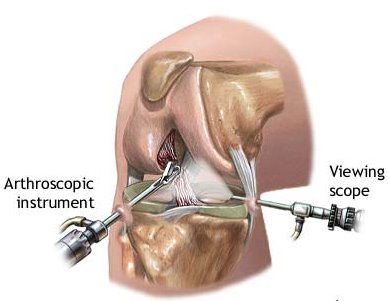
Tips for Arthroscopic Knee Surgery Recovery
In the first week after surgery, you can be able to put some weight on the knee. In most cases, you can return to normal activities by the end of the first month. If the surgery conducted is a complicated knee arthroscopy, then you may be unable to walk for several weeks. And the recovery may be prolonged to several months to one year. Take the following measures for better knee arthroscopy recovery.
1. Pain Control
It is normal to experience pain on the knee after the surgery. However, this should get better with time. You will be given a prescription for pain. Take the medicines immediately when you sense the pain. In this way, you can prevent it from worsening. Taking ibuprofen and other anti-inflammatory medication to alleviate the pain. If you take other medications with painkillers, consult your doctor to make sure the safety.
2. Rest and Activity
During the arthroscopic knee surgery recovery process, rest is a must. You should the leg propped up with 1-2 pillows. The pillows should be placed under the calf muscle or foot, which helps to prevent and control the swelling on the knee. Start slowly by walking around the house. You may need to utilize crutches to prevent you from putting too much weight on the operated knee. Avoid standing for long periods. Do not swim, jog, ride a bicycle, or do aerobics until you are cleared by the physician.
3. Wound Care
- You will be equipped with ace bandage and dressing. Do not remove them until the physician has cleared you.
- Always keep the bandage and the dressing clean and dry. When showering, wrap your leg in plastic to keep the dressing from getting wet until the tape or stitches are removed.
- You can place an ice pack on the knee 4-6 times a day, especially during the first 2-3 days. However, always take adequate care not to wet the dressing and avoid any use of a heating pad.
- If you feel the need to change the dressing, then put an ace bandage on the back over the new dressing. Wrap the ace bandage loosely around the knee and start from the calf.
- Return to the physician 10-14 days after the surgery. The physician will remove the sutures and monitor the recovery condition.
Exercises for the Surgery Recovery
Here are some exercises for faster arthroscopic knee surgery recovery. Exercises 4-7 can't be done in the first week.
1. Quadriceps Setting
 Sit on the floor, with knee extended completely straight and tight.
Sit on the floor, with knee extended completely straight and tight.- If you perform this exercise correctly, the kneecap will slide upwards towards the thigh muscles as they contract.
- During the tightening action, make sure your knees are flat on the floor or bed.
- Hold the position for five seconds. Repeat the exercise 20 times every day.
2. Heel Slides
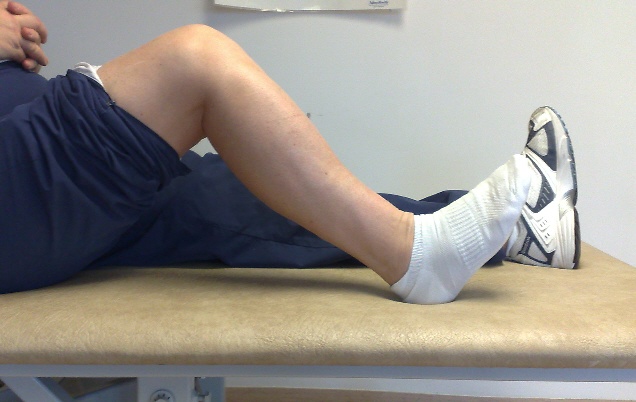
- While lying on the back, slide the heel backward while bending the knee.
- Continue bending the knee until you can feel a stretch on the form part of the knee.
- Hold onto this position for 5 seconds and then slowly release your muscles as you stretch the knee.
- Repeat the exercise 20 times in three sets a day.
3. Sitting Heel Slides
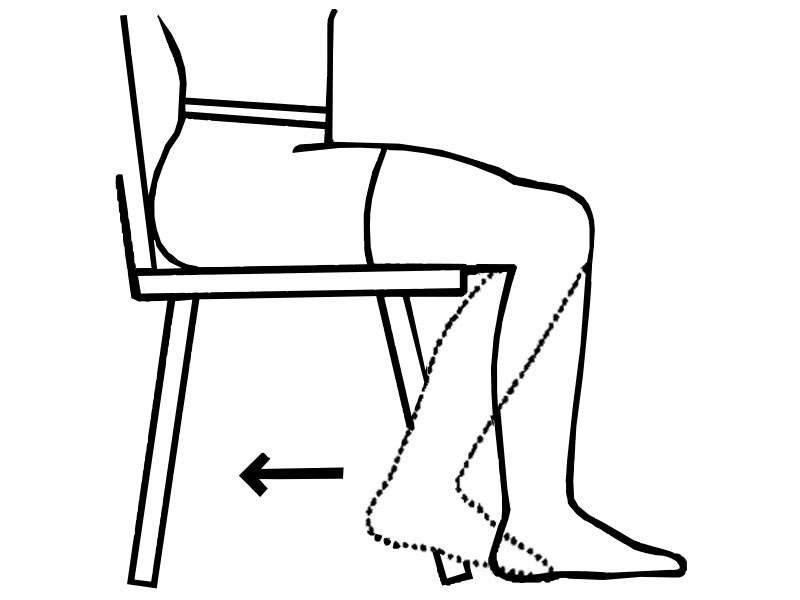
- While sitting on chair, slide you heal backward in a way like you want to bring your foot under the chair.
- Hold on to the position for 5 seconds and relieve the stretch by sliding forward.
- If necessary, you can support with the other foot.
- Repeat the exercise 20 times in three sets a day.
4. Straight Leg Lift
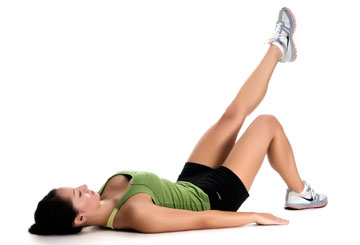
- Tighten your quadriceps so that the knee is in a straight, fully extended manner.
- Try raising the entire operated limb off the bed or floor.
- If you are in the position, raise the knee straight to about 45 degrees. Hold onto the position for 1-2 seconds.
- Relax and repeat the exercise. Repeat the exercise 20 times a day.
5. Short Arc Lift
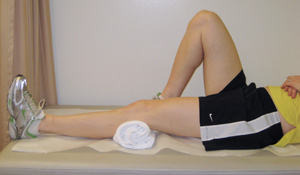
- Have your knee bend over a rolled up blanket or towel.
- Lift the foot to allow the knee to straighten fully.
- Hold on to the position for 5 seconds and slowly lower it. Repeat the exercise 20 times a day.
6. Standing Hamstring Curl
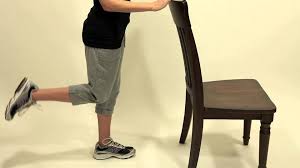 Stand facing a table or chair, using it for support and balance.
Stand facing a table or chair, using it for support and balance.- While you are standing on the unoperated leg, bend your operated knee and raise the heels towards your back area.
- Hold to the position for about five seconds.
- Slowly take your foot back to the floor and repeat the exercise 20 times a day.
7. Standing on the Toes
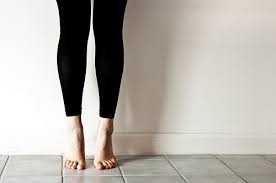 While facing the table, using the table for balance and support.
While facing the table, using the table for balance and support.- Tighten your quadriceps and hold the knee fully straight.
- Raise on tip toes and maintain the knees in a fully extended position.
- Hold on to the position, slowly lower to the starting position, and repeat the exercise 20 times a day.
When to See the Doctor
Call your physician if you experience the following symptoms during arthroscopic knee surgery recovery.
- Blood soaks through the dressing and bleeding does not stop when pressure is put on the area.
- Pain does not cease after taking painkillers or it worsens with time.
- There is pain or swelling on the calf muscle.
- The toe or foot does look darker than normal or is cool to the touch.
- There is pain, swelling, redness, or yellowish discharge from the incisions.
- Your temperature is beyond 38.3 °C or 101 °F.
